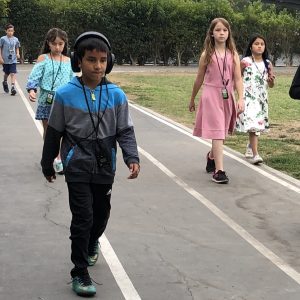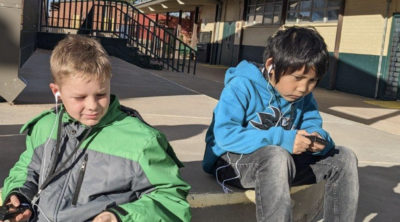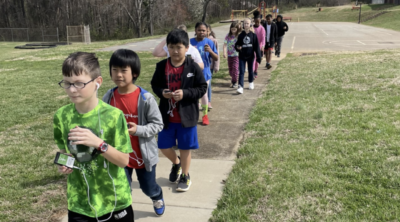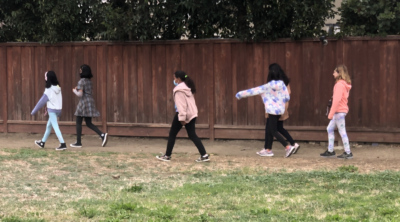This post is part of our Walk This Way series, designed to share The Walking Classroom experiences of teachers and students across the United States. This post provides a glimpse into Kathie Yonemura’s class.
With the amount of over-testing these days, I am reluctant to simply give a test for the sake of a grade. However, you can assess student comprehension in other ways besides a written test.
Even Conversations Can Count!
Although many Walking Classroom podcasts can serve as stand-alone lessons, I usually use them as supplemental material. Sometimes we listen to a podcast as an introductory lesson. In that case, I may use the quiz from the teacher’s guide as a pre-test and post-test. Other times, I incorporate the information from the podcast into a bigger unit and do not test the podcast specifically.
TWC podcasts elicit deep conversations. Using the discussion questions from the Teacher’s Guide, I can easily listen in on student responses and thoughts. Jotting down anecdotal notes while observing the conversations has been very eye-opening and helpful in gauging student understanding.
Struggling Readers See Success!
My struggling readers cannot always access written information at grade level. However, many of those same students have excellent listening comprehension. With The Walking Classroom, these students see success and I love it!
 They tend to excel on the written quizzes after walking. On the other hand, my students who usually learn new material quickly, are not focused on the podcast while walking and therefore, do not do as well on the quizzes! Listening to podcasts has been a great way to highlight different learning modalities and think about how to develop those areas that are not yet their strengths.
They tend to excel on the written quizzes after walking. On the other hand, my students who usually learn new material quickly, are not focused on the podcast while walking and therefore, do not do as well on the quizzes! Listening to podcasts has been a great way to highlight different learning modalities and think about how to develop those areas that are not yet their strengths.
Interactive Assessments
Another quick and interactive way to assess what my students have learned from the podcasts is to take the questions from the quizzes or write a few additional questions from the information given in the teacher’s guide and use them in an online platform such as Kahoot! or Plickers.
Plickers is an assessment tool that allows teachers to collect on-the-spot formative assessment data without the need for multiple devices or paper and pencil. Kahoot! is an online game show style tool to administer quizzes, discussions or surveys. It is a game-based classroom response system played by the whole class in real time.
My kids are so motivated by playing both Plickers and Kahoot! And the best part is that both systems save response data by student; giving teachers information about which questions were understood by all students, as well as which questions were confusing to students. Both platforms also break down data by student percentage scores, should you need that information.
There’s not one right way to assess student understanding. Using a variety of authentic methods allows for the most well-rounded picture of each student.
Kathie Yonemura
Fourth Grade Teacher
Hesby Oaks Leadership Charter School






I love the fact that you can see the benefit of this type of listening with different learning styles. I see that it offers an opportunity for success to students that are sometimes not as successful with written materials. I also love that you express how you use the podcasts differently. When the focus is meeting the needs of the students and teaching the required curriculum, it only makes sense that TWC fits in so many different ways! Thanks for sharing how you use it so effectively!
I agree with your idea that you can get so much from the conversations with students after a walk. Whether you are doing a stand alone podcast or connecting to something, the conversation after the podcast is a great way to see what your students took away from the podcast and even what they can transfer to other areas. I especially like that all students have access to the material when you listen, including struggling readers. It’s a great way to give everyone the opportunity to show what they learn when they listen. And listening skills improve along the way, too!